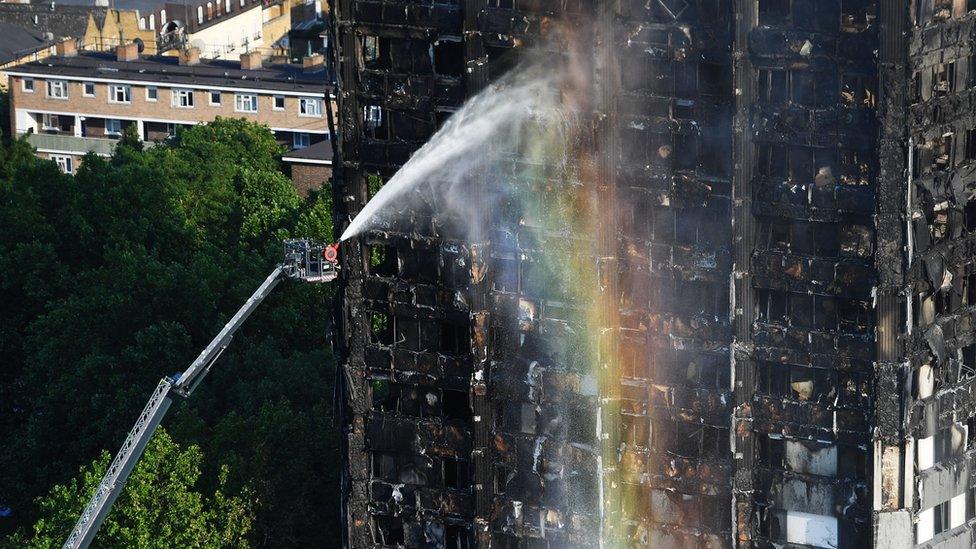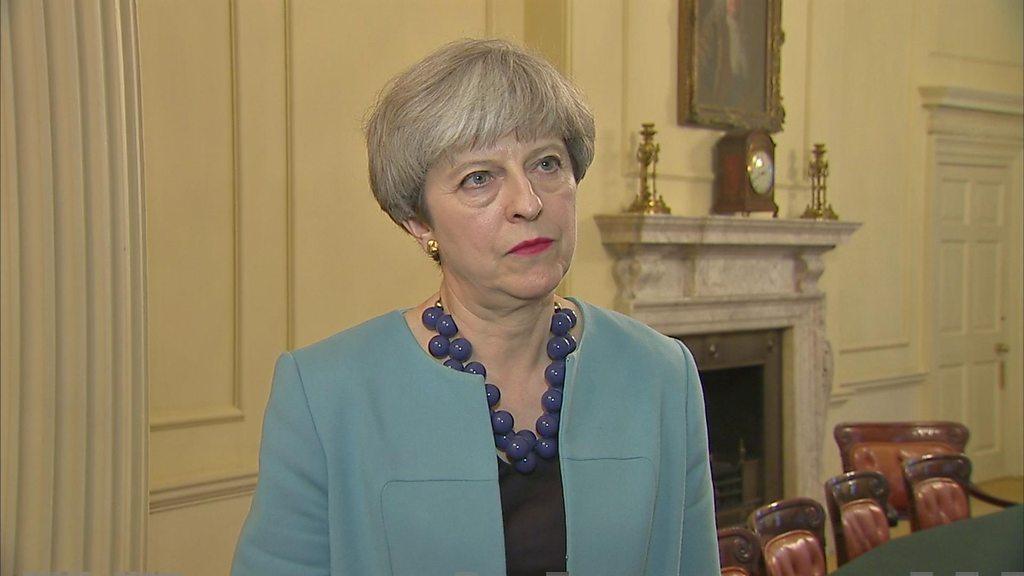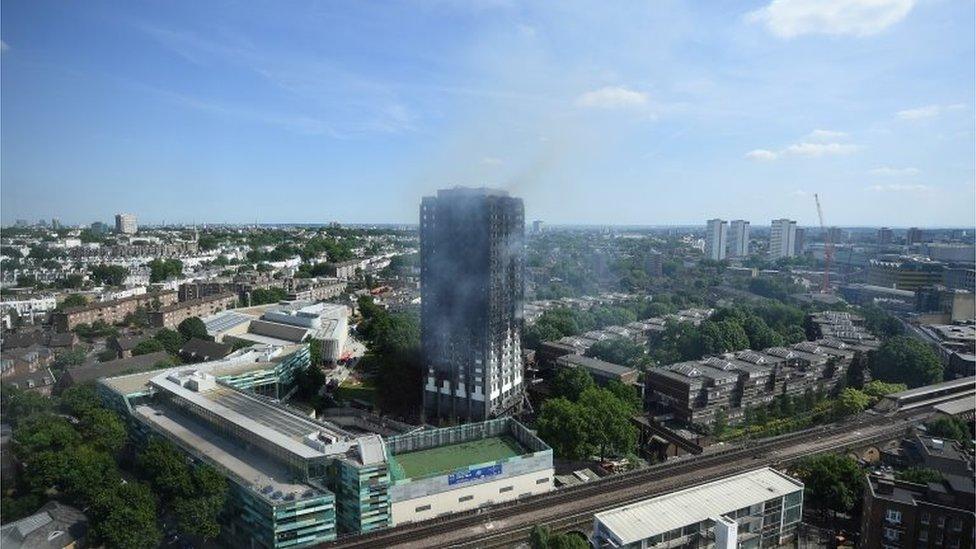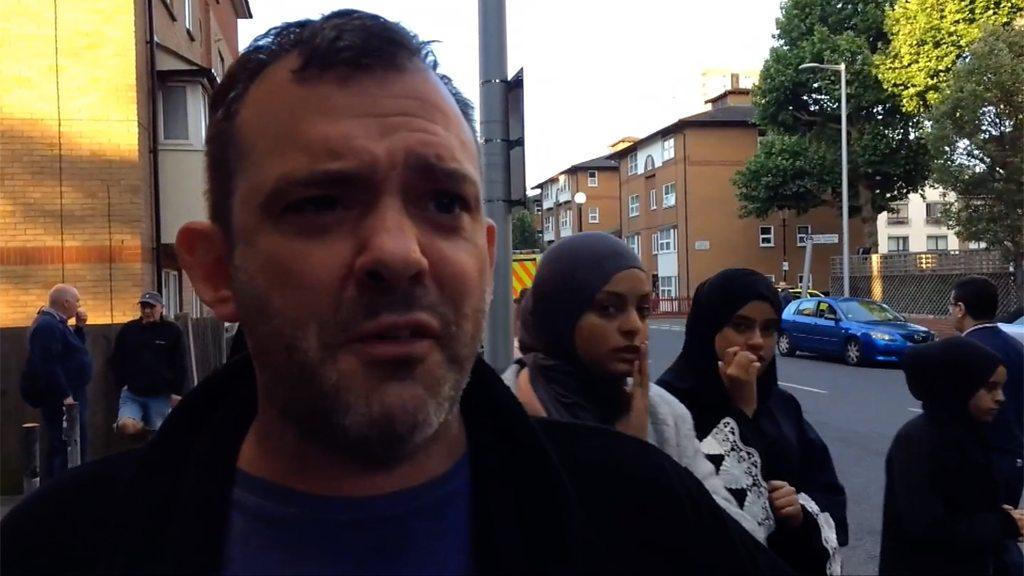London fire: Grenfell Tower cladding 'linked to other fires'
- Published

Work to install new cladding was completed in 2015
The cladding on Grenfell Tower was used on other buildings hit by fires around the world, the BBC has learned.
The exterior cladding, added in 2015, had a polyethylene - or plastic - core instead of an even more fireproof alternative, BBC Newsnight understands.
High-rise buildings in France, the UAE and Australia that had similar cladding have all been hit by fires that spread.
The government says if this cladding was used, it would not comply with current building regulations.
The Department for Communities and Local Government said such material should not be used as cladding on buildings over 18m high.
Rydon, which completed the renovations, said the work met all fire regulations.
The company also insisted that building control and safety standards had been fully met.
And Harley Facades, the company that fitted the panels to the building, said in a statement: "At this time, we are not aware of any link between the fire and the exterior cladding to the tower."
The west London tower block was refurbished at a cost of almost £9m.
The exterior of the 1970s-built tower was modernised with replacement windows, while additional homes were added using vacant space in the building.
The work also included the installation of new cladding - consisting of two aluminium sheets with a polyethylene core.
However, experts have told Newsnight that cladding with a mineral core is considered to be less flammable.
Newsnight policy editor Chris Cook said the cladding used on Grenfell Tower was sold under the brand Reynobond.
He said manufacturers offer two different versions of the cladding - one with a plastic core and one with a mineral core.
He said he understood cladding with a plastic core was used in the west London tower.
Enormous areas destroyed
Christopher Miers, managing director of specialist architects Probyn Miers, told the programme it was "critical" what the core of the cladding was made of.
"I think attention on the cladding is because we've seen in the reports and the photographs, burning exterior of the building," he said.
"And we've seen enormous areas where the exterior is destroyed."
Matt Wrack, general secretary of the Fire Brigades Union, said people living in the north Kensington block "have the right" to ask whether the cladding compromised the safety of the building.

Flames could be seen spreading up the tower block
He told the programme there must be an "absolutely thorough investigation".
Tower blocks in the UK are designed to prevent fires spreading and to restrict them to one flat or floor, he added.
Residents in Grenfell Tower say they were told as recently as last weekend that they should remain in their flats in the event of a fire.
Mr Wrack added: "If during the course of renovations, fire resistant walls, doors, ceilings have been compromised, then clearly the whole basis on which that advice has been based falls apart.
"This should not be happening, that's the horrible aspect of this incident."
'Too early'
Both before and during the refurbishment, the local Grenfell Action Group, external claimed that the block constituted a fire risk.
Residents also warned that site access for emergency vehicles was "severely restricted".
The 24-storey Grenfell Tower is managed by the Kensington and Chelsea Tenant Management Organisation on behalf of the council.
In a statement it said: "It is too early to speculate what caused the fire and contributed to its spread.
"We will co-operate fully with all the relevant authorities in order to ascertain the cause of this tragedy."

Do you live in a building with similar design and cladding to Grenfell Tower? We would like to hear from you. Email haveyoursay@bbc.co.uk, external
You can also contact us in the following ways:
Tweet: @BBC_HaveYourSay, external
WhatsApp: +447555 173285
Text an SMS or MMS to 61124 (UK) or +44 7624 800 100 (international)
Please read our terms & conditions


- Published14 June 2017

- Published14 June 2017

- Published14 June 2017

- Published14 June 2017
